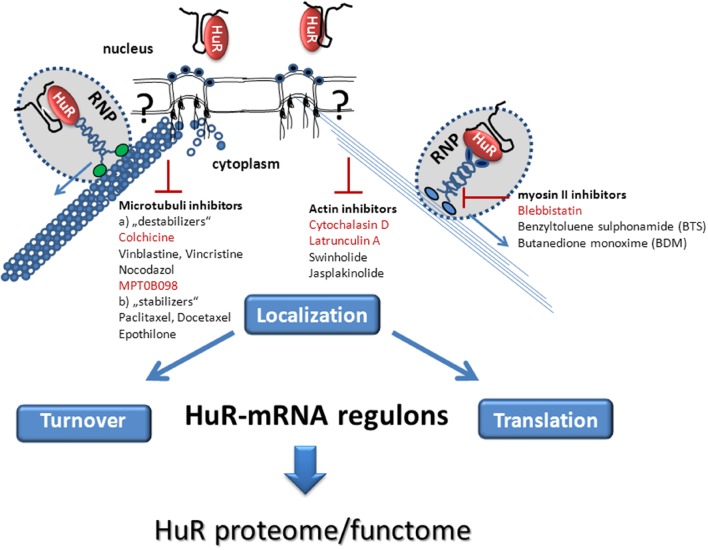FIGURE 1.
Schematic summary of pharmacological stratagies aiming at the inhibition of post-transcriptional HuR mRNA regulons by interfering with cytoskeleton-dependent intracellular HuR-mRNA transport. The cytoplasmic transport of HuR bound mRNA cargo occurs in form of a remodeled ribonucleoprotein (RNP) particle by a mechanism which requires either the actin-myosin based (Right) or microtubule dependent (Left) cytoskeleton. The hypothetical connection between cytoskeletal elements (microfilaments, microtubules) and the nuclear pore complex is indicated by a question mark. HuR bound target mRNAs are further directed to their final destination (turnover or translation) via a motor-driven transport along actin filaments (Right), or along microtubuli (Left). Pharmacological inhibitors of the actomyosin dependent cytoskeleton (Right) including actin inhibitors and myosin II inhibitors or drugs which affect the (de)polymerization of microtubules (Left) with a potential effect on cytoplasmic HuR transport are listed. Those cytoskeleton Inhibitors which have proven a direct effect on cytoplasmic HuR abundance in the literature are highlighted in red color.

